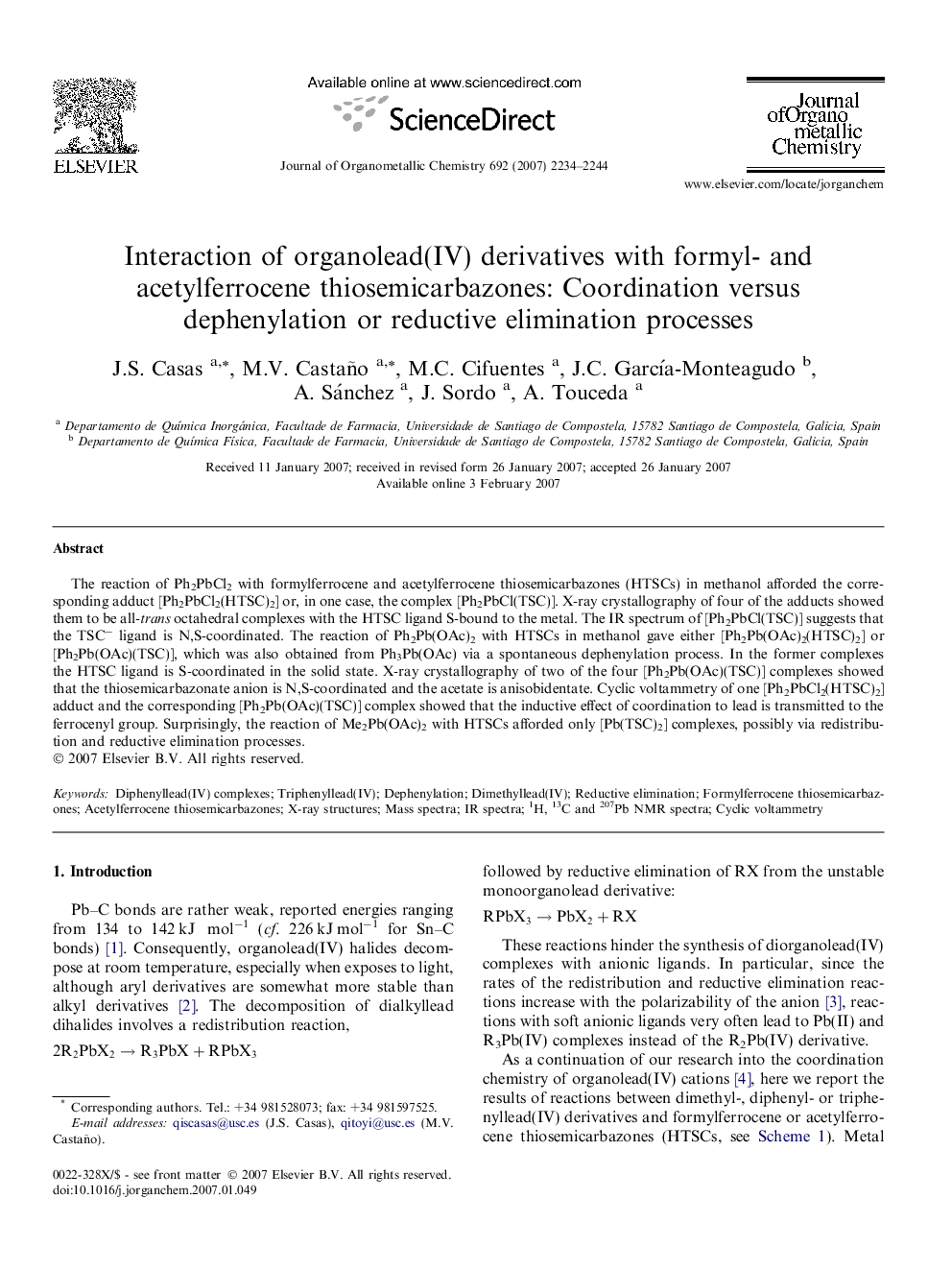| Article ID | Journal | Published Year | Pages | File Type |
|---|---|---|---|---|
| 1325388 | Journal of Organometallic Chemistry | 2007 | 11 Pages |
The reaction of Ph2PbCl2 with formylferrocene and acetylferrocene thiosemicarbazones (HTSCs) in methanol afforded the corresponding adduct [Ph2PbCl2(HTSC)2] or, in one case, the complex [Ph2PbCl(TSC)]. X-ray crystallography of four of the adducts showed them to be all-trans octahedral complexes with the HTSC ligand S-bound to the metal. The IR spectrum of [Ph2PbCl(TSC)] suggests that the TSC− ligand is N,S-coordinated. The reaction of Ph2Pb(OAc)2 with HTSCs in methanol gave either [Ph2Pb(OAc)2(HTSC)2] or [Ph2Pb(OAc)(TSC)], which was also obtained from Ph3Pb(OAc) via a spontaneous dephenylation process. In the former complexes the HTSC ligand is S-coordinated in the solid state. X-ray crystallography of two of the four [Ph2Pb(OAc)(TSC)] complexes showed that the thiosemicarbazonate anion is N,S-coordinated and the acetate is anisobidentate. Cyclic voltammetry of one [Ph2PbCl2(HTSC)2] adduct and the corresponding [Ph2Pb(OAc)(TSC)] complex showed that the inductive effect of coordination to lead is transmitted to the ferrocenyl group. Surprisingly, the reaction of Me2Pb(OAc)2 with HTSCs afforded only [Pb(TSC)2] complexes, possibly via redistribution and reductive elimination processes.
Graphical abstractThe reaction of diphenyllead(IV) derivatives with the title ligands (HTSC) in methanol afforded either 1:2 adducts or 1:1 complexes (see scheme). With triphenyllead(IV), dephenylation occurred leading to diphenyllead(IV) compounds. The reaction of Me2Pb(OAc)2 and HTSC afforded only Pb(II) derivatives.Figure optionsDownload full-size imageDownload as PowerPoint slide
